All About Pelargonium Edwards
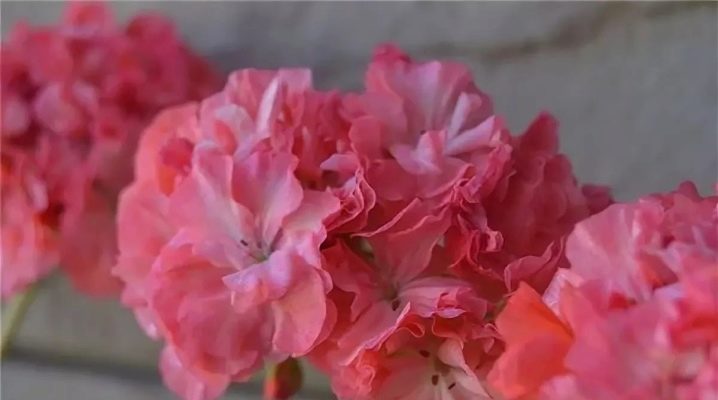
In its homeland, pelargonium belongs to perennial plants and grows to a height of more than one and a half meters. In temperate climates, pelargonium is an annual and is found mainly in private home collections and in greenhouses.
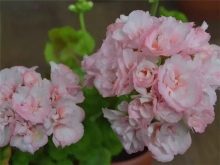
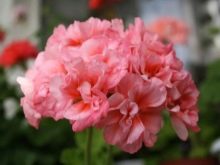
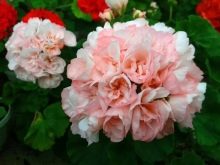
Peculiarities
Pelargonium belongs to the Geraniev family. The homeland of the plant is South America. Some varieties also grow in the African continent, Australia and other tropical areas. The flowers of pelargonium are large, with an elongated sepal, in appearance slightly resembling the beak of a crane or a stork, for which the plant got its name Pelargonium, translated from Greek as "crane nose".
The color of the flowers has an extensive palette, and depending on the variety, it can vary from light, almost white, to dark purple, almost black.
It is believed that for the first time in Europe, pelargonium was introduced in 1672. Collector botanist Paul Hermann sent several specimens of this plant from South Africa.

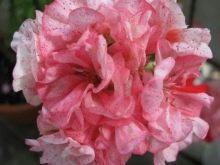
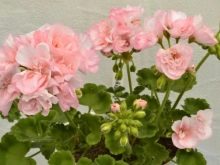
Amateur flower growers appreciate pelargonium for its luxurious appearance and long flowering period. In addition, this plant is not capricious and does not require any special care. However, pelargonium is appreciated not only for its visual appeal. It has a lot of useful properties. So, an infusion of the leaves of this plant normalizes blood pressure and soothes. The flower compress heals open wounds and speeds up the healing process.
As mentioned above, pelargonium belongs to the Geraniev family, therefore the two cultures are often confused with each other. Meanwhile, there are differences both in the shape of the flower and in the size of the plant itself. In 1738, the Dutch scientist Johannes Burman first separated these two names, however, another scientist, botanist Karl Linnaeus from Sweden, in 1753 in his scientific work "Plant Varieties" challenged this statement and combined the two flowers into one group.
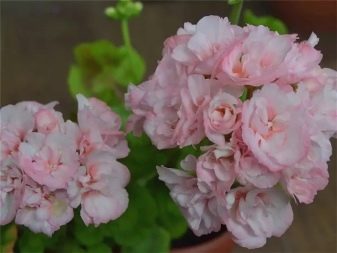
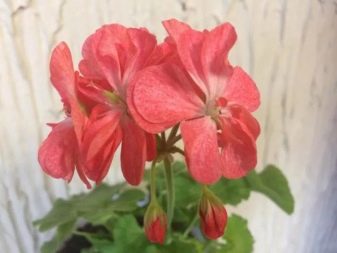
Disputes about this do not subside to this day. Meanwhile, those flowers that grow everywhere in almost every home are pelargoniums. Unlike geranium, which feels great even at sub-zero temperatures, Pelargonium is very thermophilic and does not winter outdoors.
The petals of pelargonium are of different sizes - the lower ones are smaller, and the closer to the crown of the flower, the longer they are. In addition, despite all the variety of colors, Pelargonium does not have blue flowers.
Varietal variety
Pelargonium has several hundred different varieties. Let's take a closer look at the Edwards series. It belongs to the zonal group because of the special color of the leaf. During flowering, the color of the leaf plate changes, dividing it conditionally into two zones.
Lighter in the center, towards the edge of the leaf, the color becomes darker and richer. All zonal varieties of pelargonium are divided into non-double, with 5 petals, semi-double, with 6 to 8 petals, and terry, with 8 or more petals. Depending on the size of the bush, plants are divided into ordinary (standard) and dwarf. The standard can grow to a height of 30-50 cm, and the dwarf is usually no higher than 25-30 cm. Let's take a look at the most popular copies from the Edwards series.
- Calico. The flowers are large, double, have a delicate silvery-lilac shade, rather unusual for pelargoniums. The bush is dwarf, but very branched.
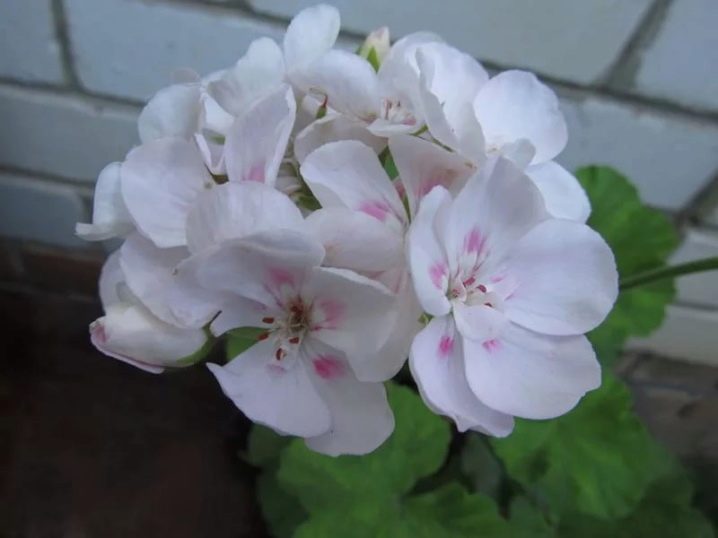
- Calypso. The inflorescences are large, multi-layered, rich pink color, which, with proper care, smoothly flows into lavender. The bush branches well.
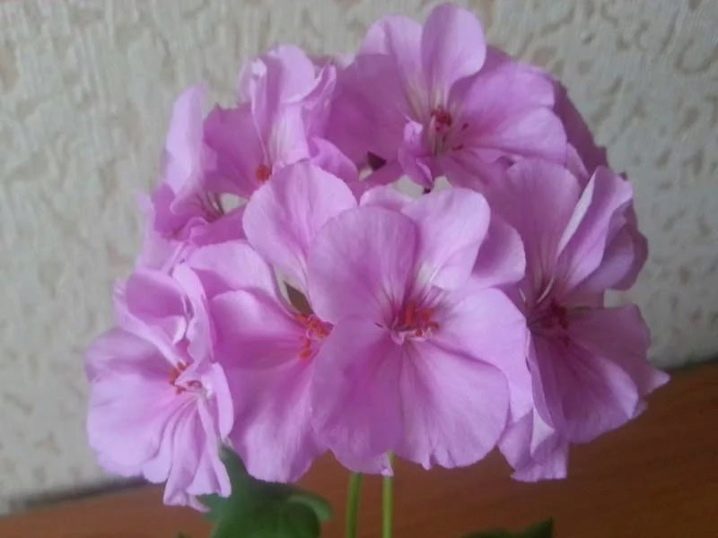
- Syngenta... Semi-double, pale lilac balls, in the center have a white eye, from which darkish veins extend in different directions.

- Caris... Terry, snow-white balls, reminiscent of a huge school bow. Under the rays of the sun, a subtle hint of pink appears. The bush can be shaped at your own discretion.

- Christina. The flowers are very large, with a rich salmon color. The plant pleases with its abundant and long flowering.

- Courtney. The variety is easily recognizable by its bright orange color with a pink tint - intense in the center, and lighter at the edges of the petals. The petals themselves have a slightly wavy texture.
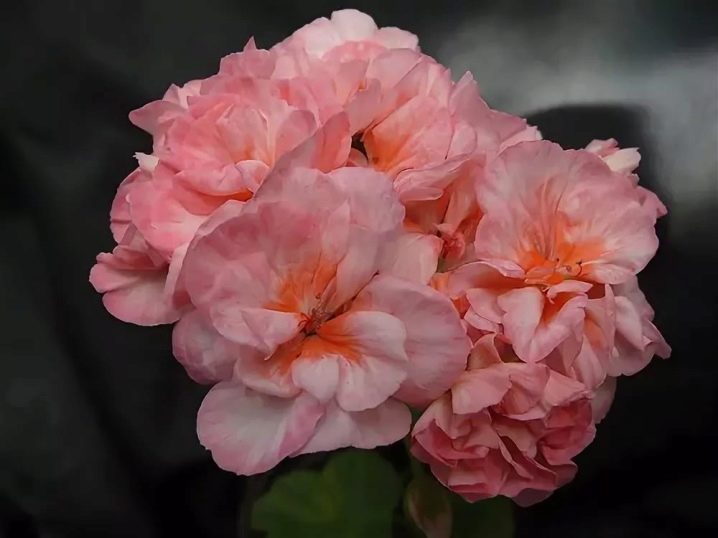
- Elegance. The bush is standard and requires constant crown formation. Double flowers, delicate peach color, like small clouds. Jagged petals.
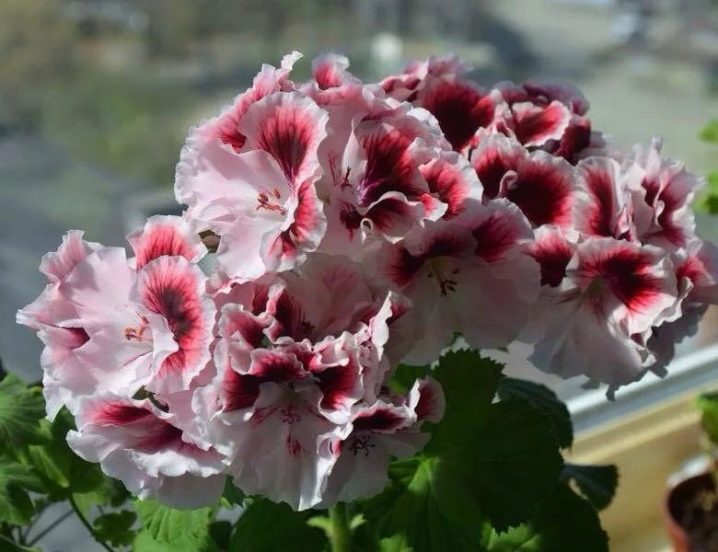
- Toscana. Bush category standard. The inflorescences are multi-layered, up to 10 cm in diameter, have a bright scarlet hue, in a blossoming state they resemble rose flowers. At the same time, the inside of the flower has a more saturated color, and outside the petals are much paler.
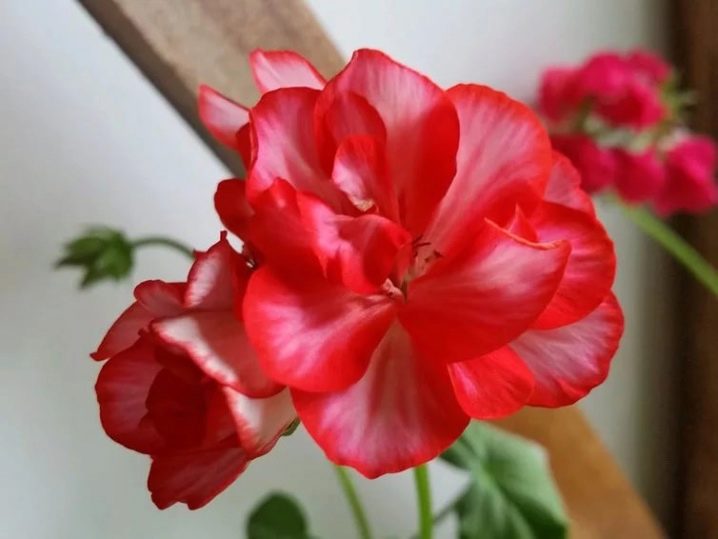
- Embers. The bush is standard, with a branched crown in need of care. The flower is golden in color, the petals on the front side are somewhat lighter than on the back. The foliage has a brownish tint.
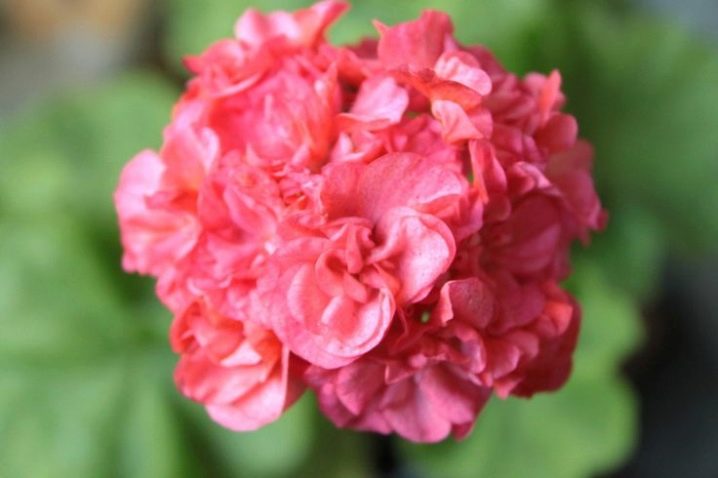
- Finn. Flowers of a light salmon shade, collected in terry balls. The leaves are pointed, with a pronounced division into color zones. The bush retains its natural shape well, so it does not need frequent adjustments.
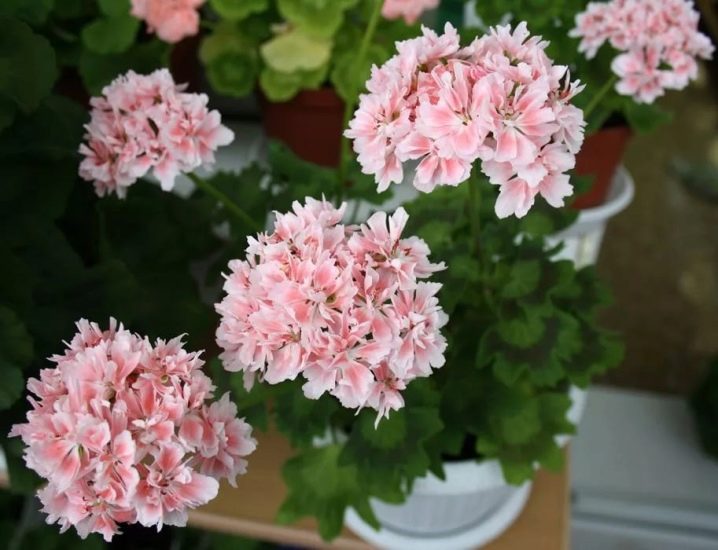
- Green Eyes. The bush is compact, easy to care for, with huge snow-white balls of double flowers. In the middle of each flower there is a small green circle that looks like an eye (hence, probably, the name - "green eyes"). The flower pleases with abundant flowering.
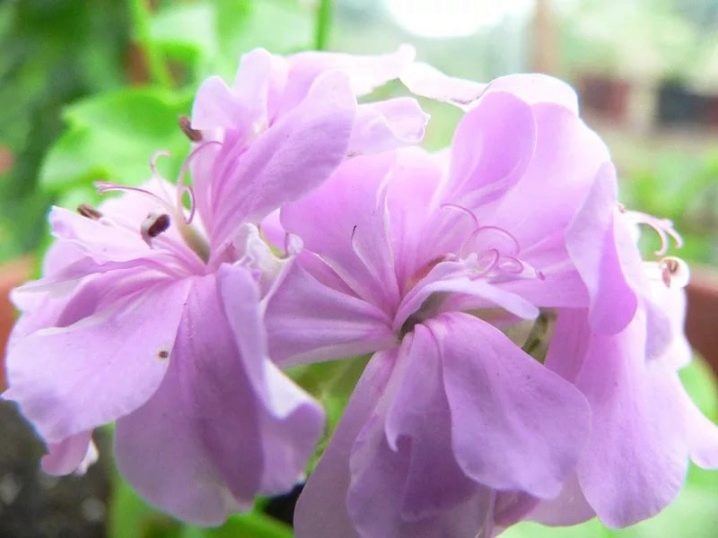
- Hillary. The bush is standard, does not need frequent pruning, the flowers are formed into bright pink hats with a purple tint.

- Joyce... Dwarf bush, keeps its shape well. The flowers are multi-layered, semi-double, with white petals. The color of the petals is white with shapeless red strokes, the flowers are formed into large caps.

- Kim. Pelargonium is semi-double, with large coral-colored flower caps, a bright red-colored flashlight eye and dense green foliage. The slow growth of the flower is compensated by the abundant flowering.
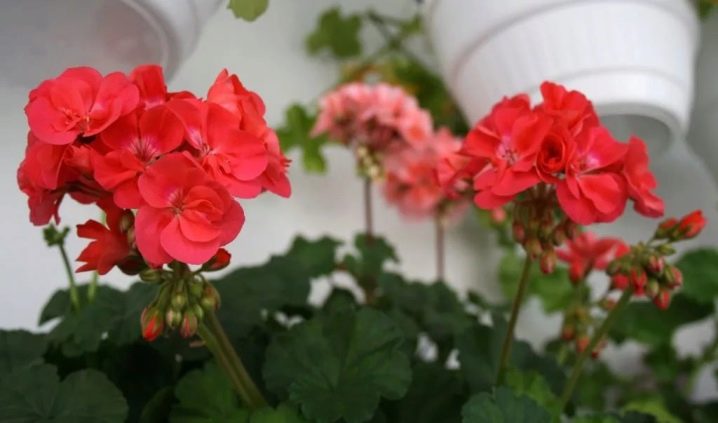
- Pearl. Belongs to the category of dwarf, semi-double. Flowers of a pleasant salmon shade, with a wide white border around the edges. The leaves have a pronounced zoning.
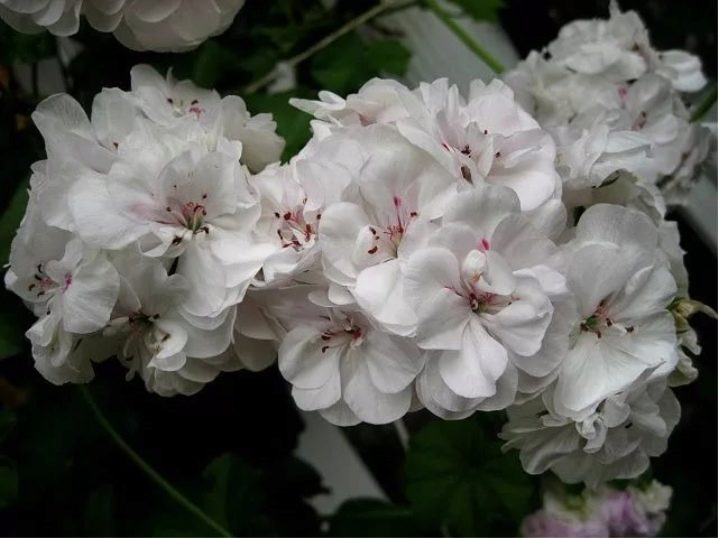
- Pleasure. The flowers are star-shaped, fringed at the edges, pinkish-orange, with blue and white blotches atypical for pelargonium. The leaves on the front side are dark green with a beige border, on the back they have a reddish tint.

- Romany. Dwarf bush, compact. The flowers are semi-double, pale in the middle, almost white, smoothly turning into pink. In the center there is an orange peephole. The color saturation depends on the intensity of the sun's rays.
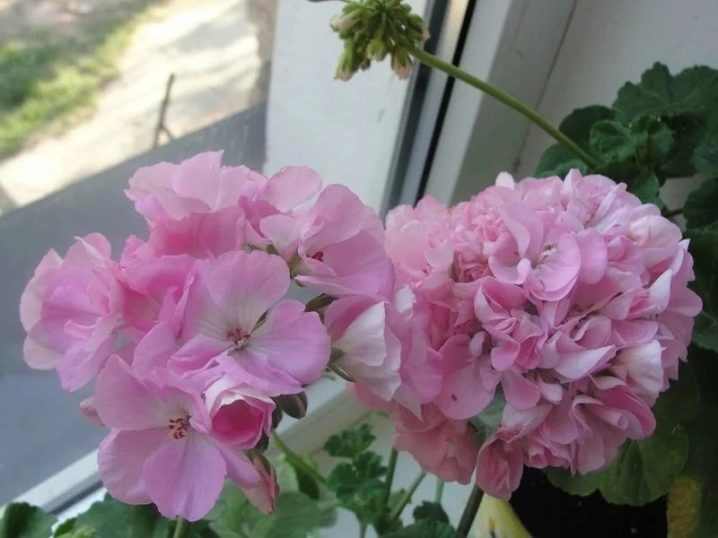
- Tamara. Pelargonium is dwarf, terry. Peduncles are short, fluffy bush. The flowers are collected in pastel pink air caps.
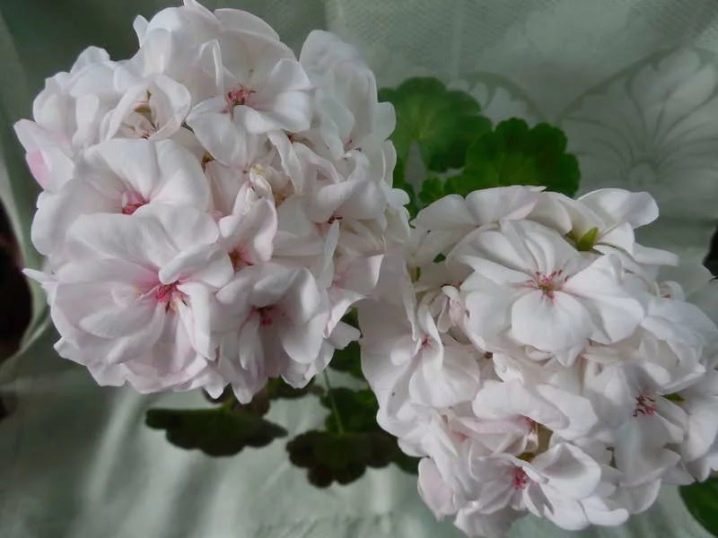
- Blanche. The bush is standard, the flowers are double, white, with an orange core and a light orange-pinkish bloom around the edges. The leaves have a distinct color zoning.
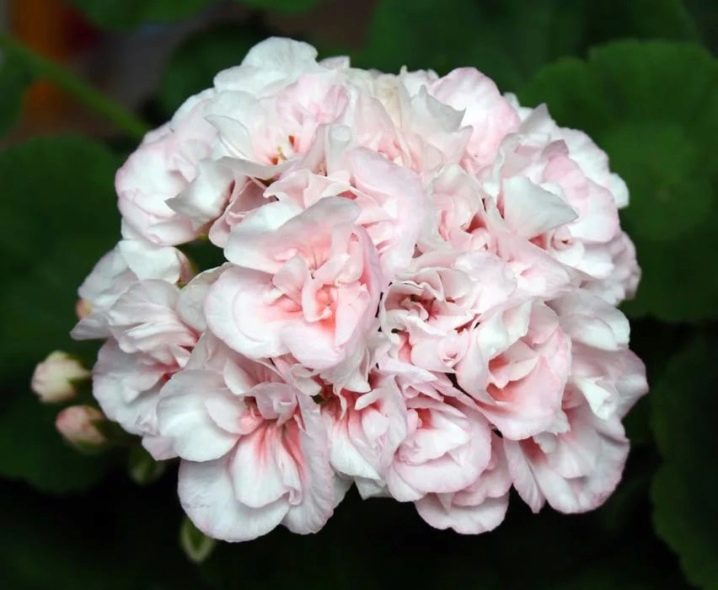
Subtleties of care
This culture is not too demanding in care and feels great at home. In order for the plant to please with abundant and regular flowering, you need to follow a few simple rules.
- Transfer. The planting container should not be too large. Otherwise, the plant will spend all its energy on the development of the territory, and not on flowering. The peculiarity of pelargonium is that it will not bloom until the root system grows to the limits allotted to it. Therefore, the plant should not be transplanted without the need, especially since the adult reacts very negatively to this procedure.

- Watering. Pelargonium does not like excess moisture, so it should be watered as it dries near the root soil. Do not spray the plant.
Good drainage is essential to prevent stagnant water near the roots.
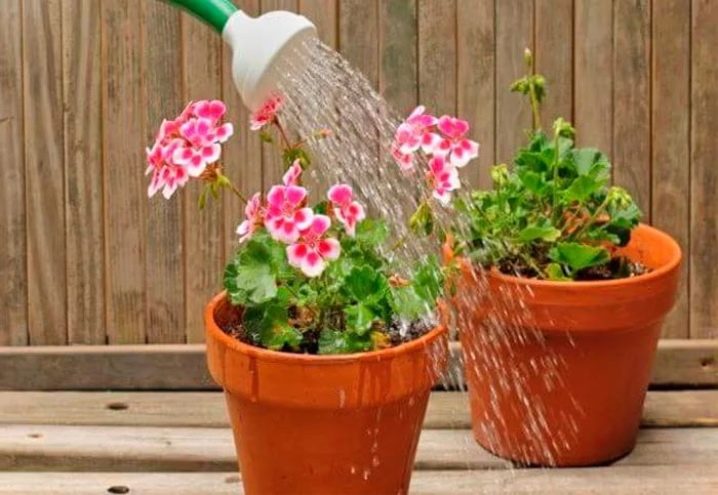
- Crown formation... Some varieties tend to rise too intensely, so to give the bush the desired shape, the ends of the branches need to be broken off.
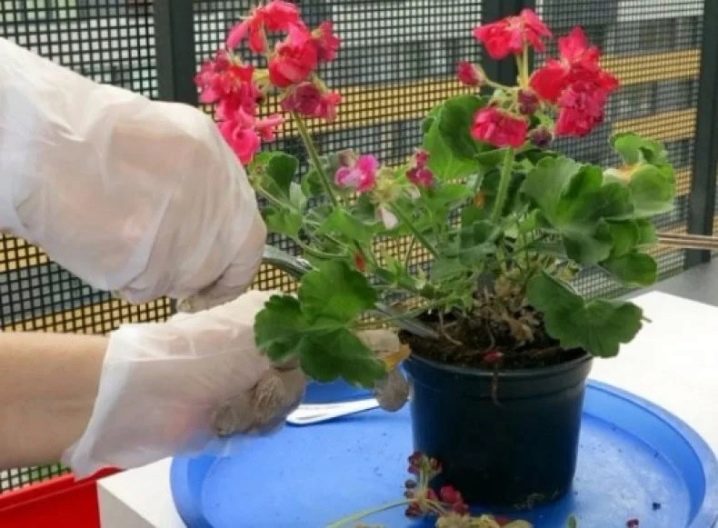
- Lighting... Pelargonium tolerates partial shade well, but feels more comfortable in good lighting. For uniform development, it is advisable to turn the plant every few days to the sun at different angles.
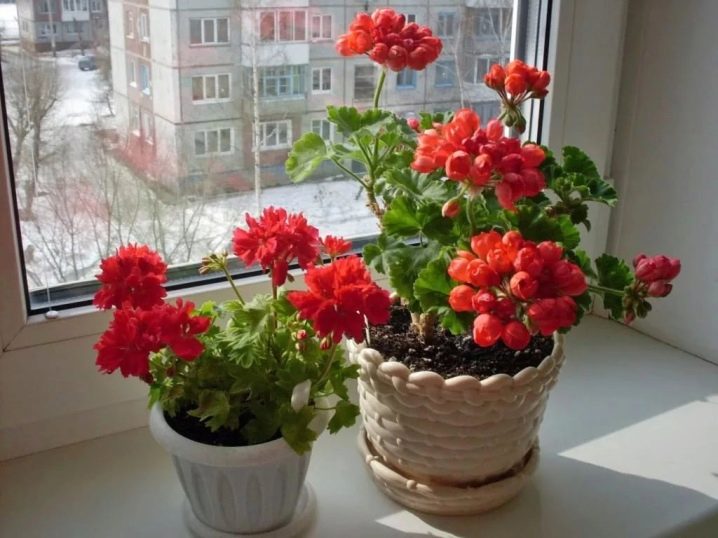
- Reproduction. On average, a pelargonium bush lives for several years, after which the flowering intensity gradually decreases, and the plant loses its attractiveness. You can get a new one by grafting. To do this, at the end of winter or early spring, you need to cut off the tops of the shoots. Cut 5-7 cm from standard pelargoniums, 2-3 cm from dwarf ones. Cut cuttings are freed from the lower leaves and placed in water or a stimulating solution.
As practice shows, pelargonium takes root well in ordinary water and can bloom in the same year it was planted.

Diseases and their treatment
Let's consider some of the most common diseases of home pelargonium.
- Gray rot - a bloom on the leaves of a dirty gray color. It occurs as a result of waterlogging, stagnant water or air. Stem decay occurs from the overflow of the plant. This is easily identified by the presence of dark indentations at the base. The plant can no longer be saved, but you can try to cut and root the top.
- Fungus. The leaves turn yellow and fall off, dark spots appear on the plant. The diseased parts are removed, and the bush itself is sprayed with fungicides. These are drugs such as Topsin, Skor, Topaz. If the damage is significant, the entire crown of the plant can be placed in the solution.
- Powdery mildew - a fairly common disease of indoor plants. It manifests itself in the presence of white lumps. For treatment, the bush should be treated with special preparations.
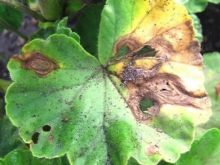
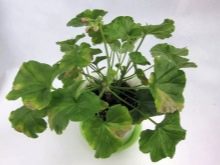
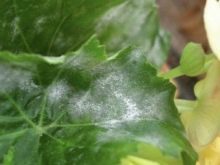
Other possible damage to pelargonium:
- redness of foliage, the reason for this may be a low temperature;
- lack of flowering, possible reasons: excessive watering, high temperature, lack of light;
- the leaves turn yellow and dry at the edges - the reasons are the same as in the previous paragraph.
For information on how to care for pelargonium, see the next video.































The comment was sent successfully.